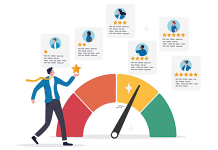As modern sellers, our goal is to solve our clients’ and prospects’ business challenges. When we do so, we increase sales growth. Sales enablement addresses those challenges and is at the heart of a successful sales strategy.
Sales enablement is an executive business function that combines sales strategy and implementation to positively impact the sales profession within our organization and leads to creating stronger client outcomes. It is a bridge connecting people, sales structures and clients.
Think of sales enablement with a center of excellence approach. When you have this mindset, you can position sales enablement to have the same authority as a project management organization or other program vital to business. This requires advocacy from the CEO, CSO and CRO. You must create this by looking cross-functionally to gain support with key stakeholders and establishing ownership.
Doing so will help you put discipline into place.
Three Key Components of Sales Enablement
- PEOPLE
Strategic Hiring and Onboarding
The success or failure of sales enablement begins with hiring and extends through onboarding. This makes the difference between a sales rep who is a right fit for the role and contributes to your sales growth, or one that’s no longer with your organization after a few months.
Remember, it can take nearly a year for a new salesperson to be fully onboarded and productive. If they don’t work out, not only have you lost time and hard dollars, you’ve also lost a minimum of six figures in opportunity cost.
Assessment
Data-driven assessment will study your team’s productivity and performance so you can truly understand their competencies. It gives you the opportunity to stop and consider if you have the right people in the right roles with the right skills to get you where you need to go as a business.
Sales Leadership Development
Consider your sales leadership pipeline. Do you have talent identified and ready to lead in your most critical leadership roles? It takes more than being a rock star seller. In the end, sales leaders are responsible for hiring, coaching and guiding their teams. They must be trained to design the right hiring strategy and develop interviewing skills to effectively assess candidates.
- STRUCTURES
The Sales Process
A reliable sales process helps provide the right path for sales enablement. While a sale itself may have varying levels of complexity, the process should be as systematic as possible. It will consider the customer, the type of sale (consultative or transactional), average sale cycles, and pipeline management principles. It also provides direction on the various stages of the customer relationship, from beginning (prospective customers) through maturity (ongoing relationship management and sales opportunities).
Sales Pipeline
I’m a believer in quality first and then quantity. This is especially true in high-value, consultative sales opportunities.
It requires intelligence on target accounts, building relationships with decision-makers and other buyer roles, understanding your organization’s fit with that client, and determining the lifetime value of the account.
- CLIENTS
Account Development
When your pipeline has the right mix of quality and quantity, you’ll close more new business and expand your reach within your existing accounts. Too frequently, sellers make the mistake of only seeking net-new prospects and not realizing the wealth of opportunities available to grow existing, loyal clients.
Business Partner Development
These are your outside partners, where you can create mutually beneficial results. They become additional “feet on the street,” helping you to identify opportunities, partner on engagements or make introductions.




